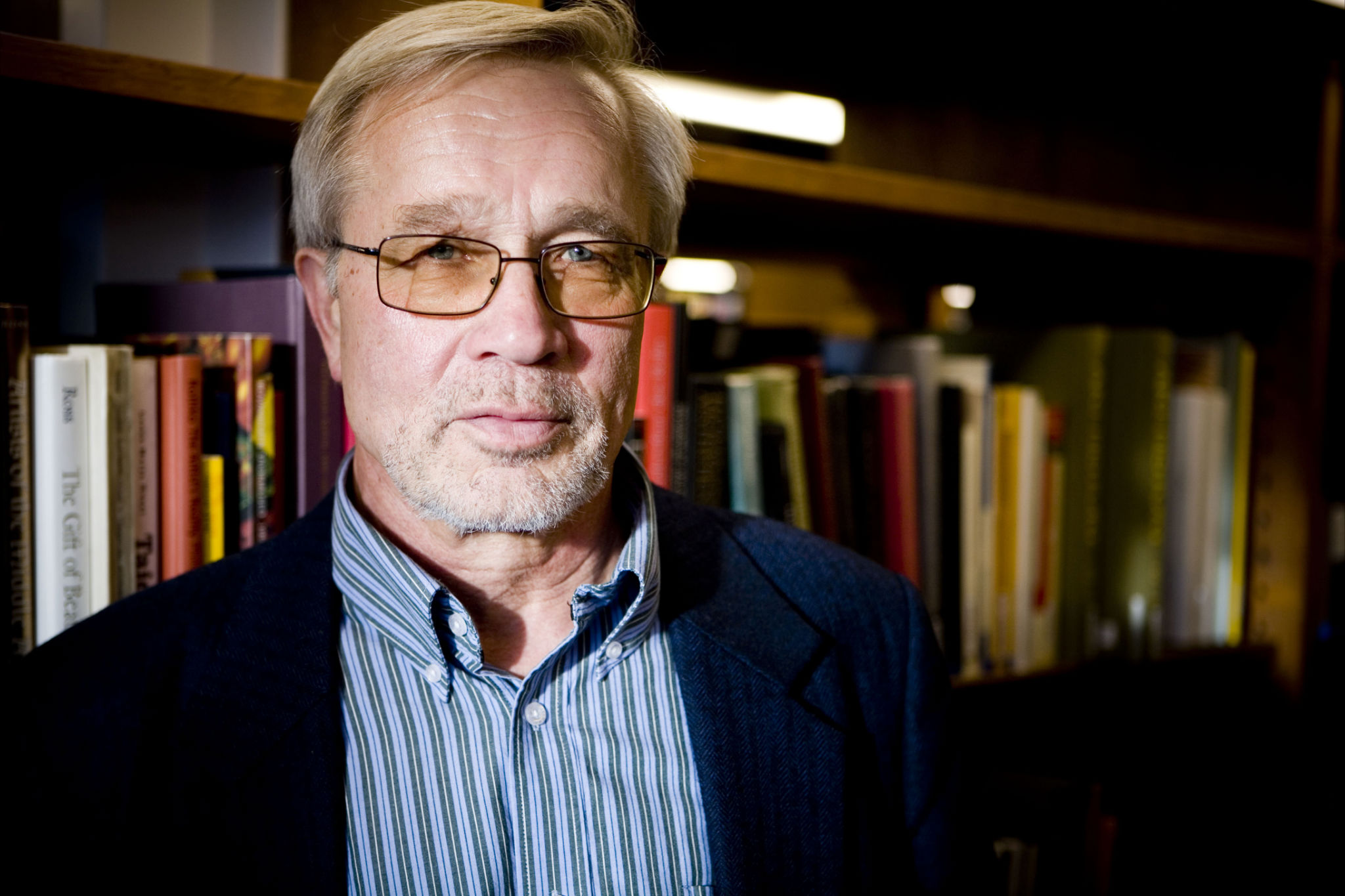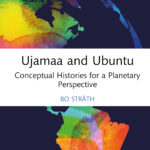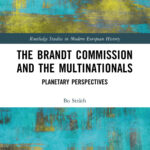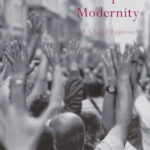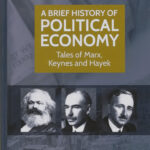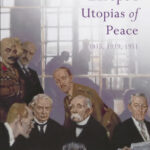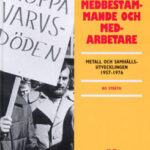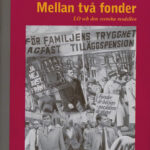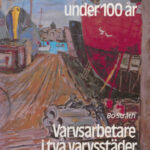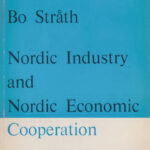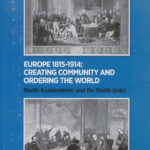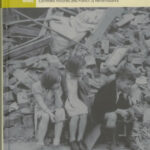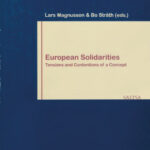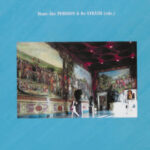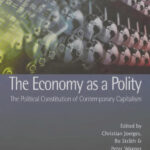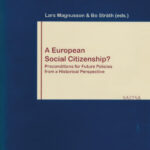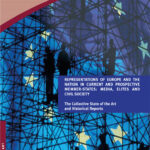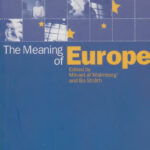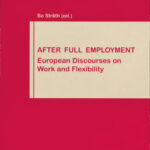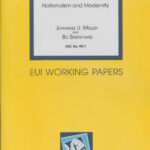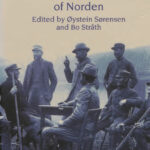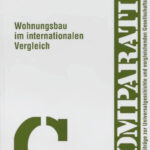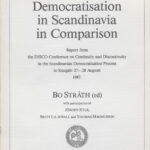The 2024 UN Pact for the Future outlines a brave plan for a new world order. Its ideas are not new. The plan echoes the Brandt Commission on the North-South issue in the 1970s and the Carlsson-Ramphal Commission on global governance in the 1990s. Will political action follow on the arguments this time?
In the text below there are two video conversations with Ingvar Carlsson and Shridath Ramphal.
The Brandt Commission on the North-South Issue 1977-83
In 1980, Willy Brandt’s commission (1977-1984) on the North-South issue rendered its report North-South: A Programme for Survival , which made a radical proposal for a new world order: Keynesian global redistribution. It was a program to eradicate hunger and poverty with a new global financial architecture, where a world fund based on special drawing rights replacing the dollar order and international taxes were central. It was a program for a world society of nations around the UN. The program was responding to the UN conference on the human environment in Stockholm in 1972 and the Club of Rome’s report, the Limits to Growth, about threatening resource exhaustion the same year. The report came close to the claims of third-world countries for a new international economic order, NIEO. The report proposed the dislocation of power from Western-dominated the Bretton Woods institutions (The International Monetary Fund and the World Bank) to the UN. The decisive point where Brandt didn’t follow the NIEO was the global corporations with their foreign direct investments in the Third World that the NIEO confronted, but Brandt circumvented. The report’s horizon was the millennium shift in 2000.
The proposal ended in a call for a summit of world leaders to decide on its implementation. The conference in Cancún in 1981, summoned for this purpose, was the first worldwide gathering of this kind. However, between the report and the summit, Ronald Reagan had become president of the USA with a very different program in mind. Cancún, where Willy Brandt was deprived of the possibility to participate, became a one-man show of Reagan, successfully killing the Brandt report.
Shridath Ramphal and Bo Stråth in conversation about the Brandt Commission
Here a video with Shridath Ramphal and Bo Stråth in conversation about the Brandt Commission’s planatery perspective and its meaning today.
Despite the defeat, Brandt continued to meet for a few more years and even delivered a second report, much more apologetic, responding to the shifting tide. The first report, the main report, had a red cover, and the follow-up was black.
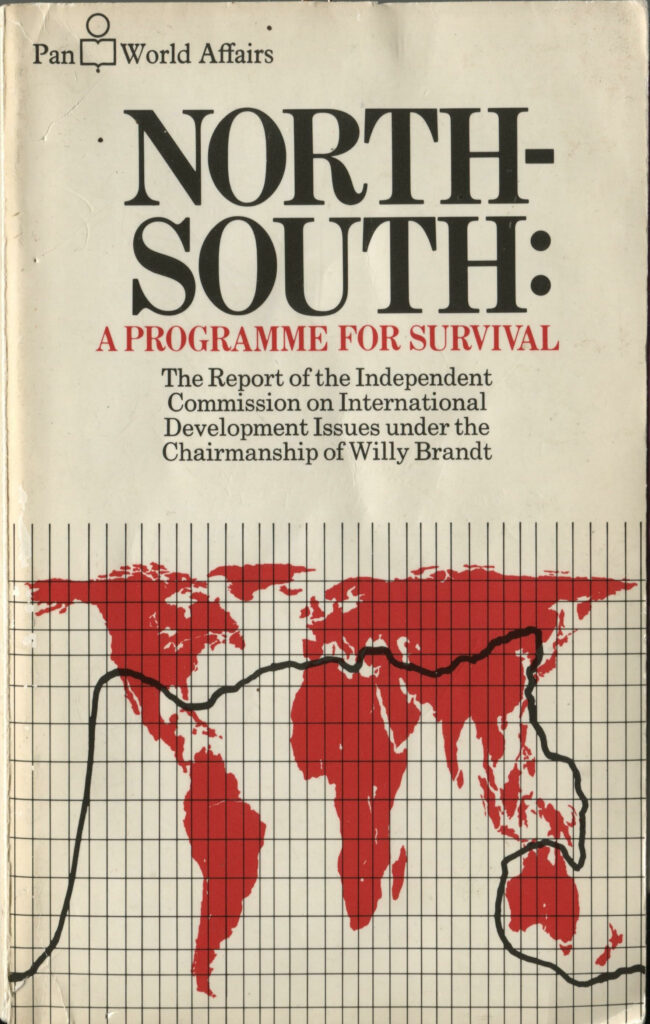
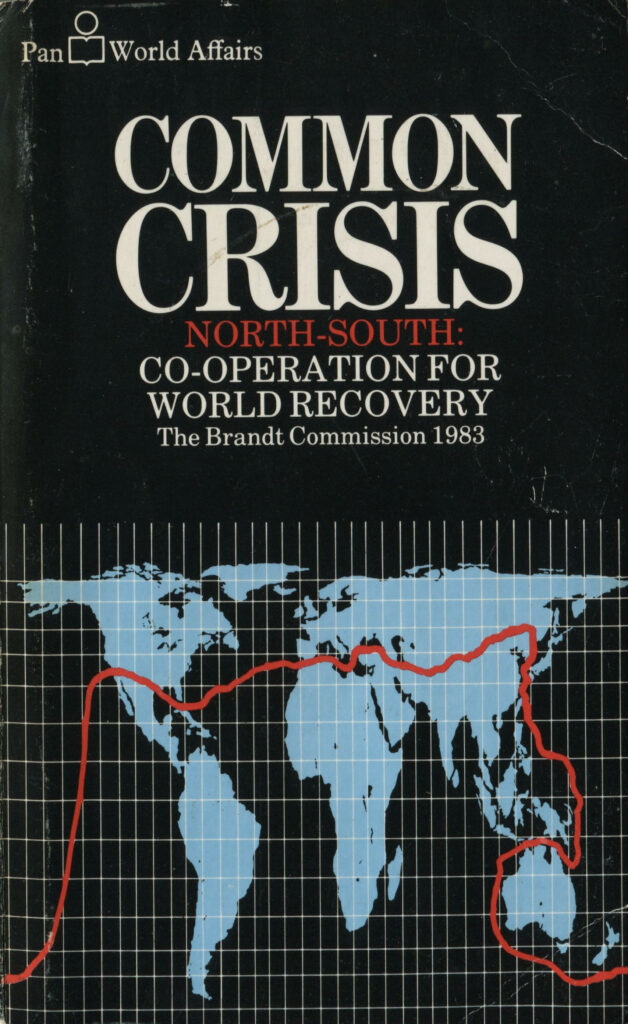
Furthermore, follow-up commissions went into particular problem fields: the Palme Commission with the report Common Security: A Programme for Disarmament (1982) and Gro Harlem Brundtland’s Commission with the report on the environmental issue, Our Common Future (1987). A third follow-up was Julius Nyerere’s South Commission with the report The Challenge to the South (1990). Whereas the Palme and Brundtland reports emphasised Brandt’s one-world perspective, Nyerere’s commission translated the planetary perspective to a Southern world, fulfilling Brandt’s ideas as a Third World cooperation in demarcation to the North. At some distant point, the South might be so strong that one could merge the South and the North into one world, but how and when this would happen was not discussed, only listed as a vague goal. The disappointment in the Third World with, yes, the bitterness at the destiny of the Brandt proposals was pronounced.
The Carlsson-Ramphal Commission on Global Governance 1991-1994
In 1984, a few months before her violent death, Indira Gandhi talked with Willy Brandt about an initiative for a new Cancún, not as a reiteration, of course, but for revenge and a reactivation of the Brandt report. In the autumn of 1988, in the wake of the Cold War thaw that followed during Gorbachev’s leadership and the near end of Reagan’s presidency, Brandt wrote a letter to US Vice President George Bush, Reagan’s successor in a few months, about it but didn’t hear anything back. In March 1989, Brandt travelled to the USA to hand over his message in persona. At the entrance of the White House, he had to identify himself and spell his name. However, the new president had no time for him.
The fall of the Berlin Wall in November 1989 changed the situation and brought opportunities to realise Indira Gandhi’s idea. In January 1990, Brandt gathered a distinguished group in Königswinter, a small town on the Rhine near Bonn, to commemorate the tenth anniversary of the Brandt report. There was agreement that the world was undergoing a fundamental transformation, opening new perspectives and promising new possibilities for political change. The meeting committed Swedish Prime Minister Ingvar Carlsson, the Brandt Commission vice chair Shridath Ramphal and its member Jan Pronk to write a paper identifying global issues that required multilateral action. Based on their paper, 37 political leaders and academic experts met in Stockholm in April of the following year. They decided on a follow-up commission to Brandt on global governance chaired by Ingvar Carlsson and Shridath Ramphal. The chairs gathered 26 commissioners, politicians, scientists, activists, high-ranking civil servants, and diplomats from national and international administrations.
With Olof Palme, Ingvar Carlsson designed in the 1960s the Swedish welfare state and a new approach in international politics around the UN and the Third World, breaking up from the Cold War closure and looking for alternatives. As a vice prime minister in Olof Palme’s government, he was, among others, responsible for questions about the future and how to come to terms with and shape the future. He succeeded Palme in 1986 after the murder of Palme. He took Sweden into the European Union. After an election defeat in 1991, he resigned but came back again to the post in 1994, staying until 1996. He co-chaired the Commission on Global Governance between the two periods as prime minister.
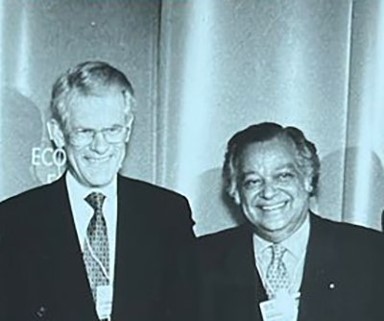
Carlsson’s co-chair was Shridath Rampahal, who, to his colleagues and many others, was known as Sonny Ramphal and also became Sir Shridath. He was a son of the Caribbean, where his ancestors were indentured laborers from India who climbed socially from his grandfather. After law studies in London and work on Caribbean economic integration, he was the foreign minister of Guyana in the early 1970s. He brought together a loose affiliation of former African, Caribbean and Pacific Island colonies, the ACP Group, for the negotiation with the European Community of what 1975 became the Lomé Agreement. That year, he became the first non-white general secretary of the British Commonwealth and stayed there for three consecutive periods until 1990. He was the charismatic vice chair and spokesman of the Third World representatives in the Brandt Commission.
Carlsson-Ramphal on global governance worked in the euphoria that emerged after the end of the Cold War. The vision of one world replacing the bipolar Cold War world underpinned the day of joy that broke out. There was talk about the end of history. Only the liberal vision remained. Hordes of Western economic consultants invaded the political and mental ruins of the Soviet Union, preaching immediate privatisation of state property, argued to represent economic inertia and political apathy. By establishing a private capitalist economy, democracy would follow suit, although with some delay. The poor countries were told that they were free and equal partners in a new world market without trade obstacles after the Cold War. Their preference treatments were outmoded. Foreign direct investment by new kinds of capitalist enterprises, multinationals, or transnational corporations, MNCs/TNCs, would replace state-led development aid, bringing more dynamic development.
In the West, governance, as opposed to government, emerged as a parallel concept to the terms public sphere and network in a new semantic field. State welfare became a privatised public service and governance replaced government as the key term in the analysis of politics. This Western shift soon became worldwide. With the declining legitimacy of Keynesian redistributive welfare politics after the 1970s poly-crisis around the dollar, oil, and hunger, a conceptual shift from the state to the market and the civil society as heuristic points of reference accompanied the transition from government to governance. The governance fiction promised less bureaucracy and corruption than what the government and state nexus was argued to represent. The innovation represented neo-corporatist entanglements around the globally operating transnational corporations conceptualised as networks. The fact that they were less visible than in the old state hierarchies does not mean that they didn’t exist, but few were interested in looking for them and their power in the break-up mode of the time.
Carlsson-Ramphal did not ignore the problem of the reshuffle of power in the 1990s, when global corporations’ economic power replaced national governments’ political power, and economic power became a new kind of political power. However, their focus was on the potential of a world society and its governance rather than the threat of emancipated capitalism. The commissioners came from a world where governments had regulated and monitored capital and believed that there was a mutual interest in continuing this arrangement although in new forms.
The civic society had not yet become the market society. Given the raptures of the time, Carlsson-Ramphal tried to develop a distance and warned of the risks that the transformation of interpretative frameworks would end in the market rule. Their report stated that the financial liberalisation that seemed to have created a borderless world was also helping international criminals and creating numerous problems for poor countries. Globalisation was in danger of widening the gap between rich and poor. The pace of globalisation of financial and other markets was outstripping the capacity of governments to provide the necessary framework of rules and cooperation arrangements. The governments were lagging. The Carlsson-Ramphal report Our Global Neighborhood argued that global governance structures for international public politics monitoring markets were underdeveloped.
Governance should rely primarily upon markets and market instruments, “perhaps with some institutional oversight.” Global governance would depend heavily on “the coordinated energies of civil organisations and state agencies.” Subsidiarity and governance mechanisms that are more inclusive and participative would be possible. There was thus an understanding that to “rely primarily upon markets and market institutions” required political coordination and monitoring and that the market needed rules, but the commission did not get in depth on this point.
In stark contrast to a pure market approach, Carlsson-Ramphal emphasised empowerment in its civic society approach, which would raise “people’s ability to provide for themselves.” The opposite was poverty because of a lack of opportunities for individuals. Unemployment was debilitating. Stable incomes would sustain empowerment. In such programmatic phrases, one hears Amartya Sen’s welfare economics.
Carlsson-Ramphal explicitly emphasised the need for vision, for a vision of a better world, and was aware that it required strategies, institutions, and political willingness to achieve. They referred to a new vision for humanity through a vision of global governance around the United Nations. Thereby, it was a matter of a reformed and revitalised UN. They wanted to retrieve the dynamic and genuinely global debates in the UN General Assembly in 1973-1975 around the Third World claims for a New International Economic Order. UNGA should be a deliberating and negotiating center of global governance. There should be no permanent members and veto rights in the Security Council. A Social and Economic Security Council should be set up to coordinate trade flows and mobilise development aid, which was rapidly declining from the neoliberal world market. Carlsson-Ramphal had a social dimension in their civic society vision without any ambition or attempt to retrieve the old welfare states in a small part of the world. They were aware of the risks that their global civic society as the framework of global governance would become a global market society.
Ingvar Carlsson and Shridath Ramphal handed over their Our Global Neighborhood report to UN Secretary-General Boutros Boutros-Ghali at the World Economic Forum in Davos in January 1995. Davos was the neoliberal Mecca where the pilgrimage of the world’s economic and political leaders, the heads of state and government and the CEOs and capital owners, the world’s powerful, occurred once a year at the end of January. The German economics professor Klaus Schwab began to build this temple in the 1970s. It became a high altar of global capitalism in the 1990s. He gave the global corporations a face, the Davos man.
This depiction of Davos is satirical and anachronic to a degree, particularly concerning the 1995 gathering. Klaus Schwab represented the idea of mutual interests and was far from the laissez-faire turn that neoliberalism ultimately took. He saw problems with a society where global corporations had the power and radical market fiction ruled. The heading of the 1995 meeting was overcoming indifference. “The opposite of love is not hate but indifference,” he wrote in an outline of the meeting. He saw dark clouds in the sky because of the implications of an increasingly globalised and interdependent world, especially concerning its social and ethical dimensions. It was essential to focus on value and the challenge of safeguarding differences so that globalisation didn’t provoke sudden disruption, he said. He referred to the threats of environmental degradation and the social consequences of poverty. Schwab required global corporations to fight these problems and argued that interdependence couldn’t mean indifference to what happened elsewhere. It was as if Schwab’s call to fight indifference came from a premonition of the emerging market society’s transforming civil society into a market society where values became prices, leading to indifference and market nihilism equal to value nihilism. With this framing of the 1995 Davos meeting, it was the right place to hand over the Carlsson-Ramphal report to the UN general secretary. To say something else would be hindsight anachronism.
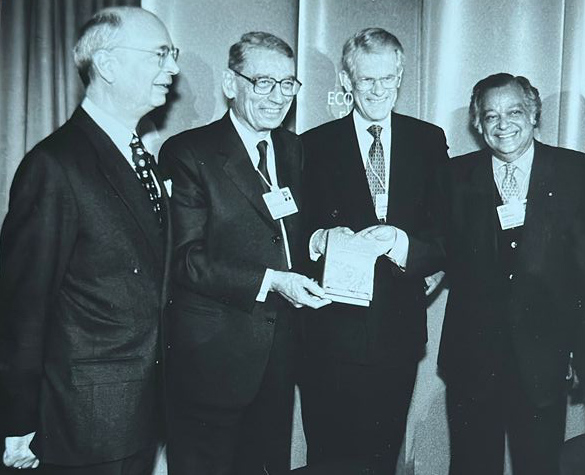
Davos director Klaus Schwab, Boutros Boutros-Ghali, Ingvar Carlsson, and Shridath Ramphal, Davos January 1995
The report’s substance and problem field were close to Brandt, but the global corporations and liberalized markets as a potentially new major problem were much more distinct in Carlsson-Ramphal. Brandt’s outline of a redistributive world Keynesianism was outdated in the 1990s. Instead of a corresponding great economic vision and plan, Carlsson-Ramphal addressed problems with the neoliberal market about to take shape, but without explicit reference to capitalism. The neoliberal global market was the visionary alternative to Brandt’s world Keynesianism. There was no room for still another alternative or proposals about reactivating Brandt. Carlsson-Ramphal expressly saw upcoming problems with capitalism about to emancipate itself from governmental monitoring. However, when Carlsson-Ramphal tried to safeguard and keep their vision of a global civic society, they hardly realised to what extent it would shift to a global market with a radically different modus operandum with little place for governance.
Planetary Perspectives: Ingvar Carlsson and Bo Stråth in Conversation
Here a video of Ingvar Carlsson and Bo Stråth in conversation about the Global Governance Commission and its meaning and importance today.
The commission hoped for a capitalist agreement based on mutual interests. In the retrospect view this was a naïve hope.
Brandt hinted at the UN as the forum for global deliberation and political monitoring. Governance was not yet a concept. Brandt handed over the institutional question to a coming world summit. Carlsson-Ramphal was more concrete about how to reform and vitalise the UN.
Our Global Neighborhood received initial attention, particularly in the academic world. Still, soon, its arguments and proposals were swept away by the rising tide of neoliberal globalisation, destroying established values and thoughts about capitalism as politically monitored by governments. One might say that whereas Cancún and Reagan killed the Brandt Report, the UN to which it was handed over buried it. The Carlsson-Ramphal Report was not killed but buried by the UN, buried through a demonstrative disinterest.
The 2024 UN Pact for the Future
The Summit of the Future in New York, 22-23 September 2024 adopted a resolution about a Pact for the Future. The resolution text repeated in many respects the arguments of the Brandt and Carlsson-Ramphal commissions. It made the same planetary tour d’horizon worldwide regarding environment, poverty, social and economic inequalities, development, human rights, and peace and security as the two forerunners. The difference is that Brandt and Carlsson-Ramphal knocked at the door of the UN, asking it to take responsibility for implementing their proposals. The UN failed or didn’t want to do so. The difference is that the agenda this time came from the UN itself. The question is not if the UN will bury its proposal, too, but whether its member states will do it.
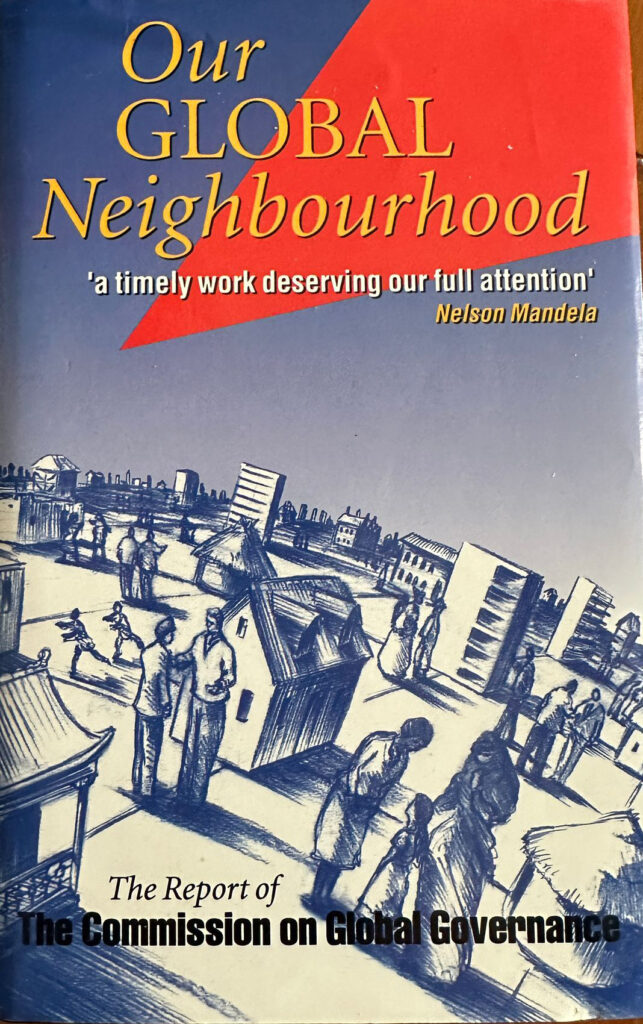
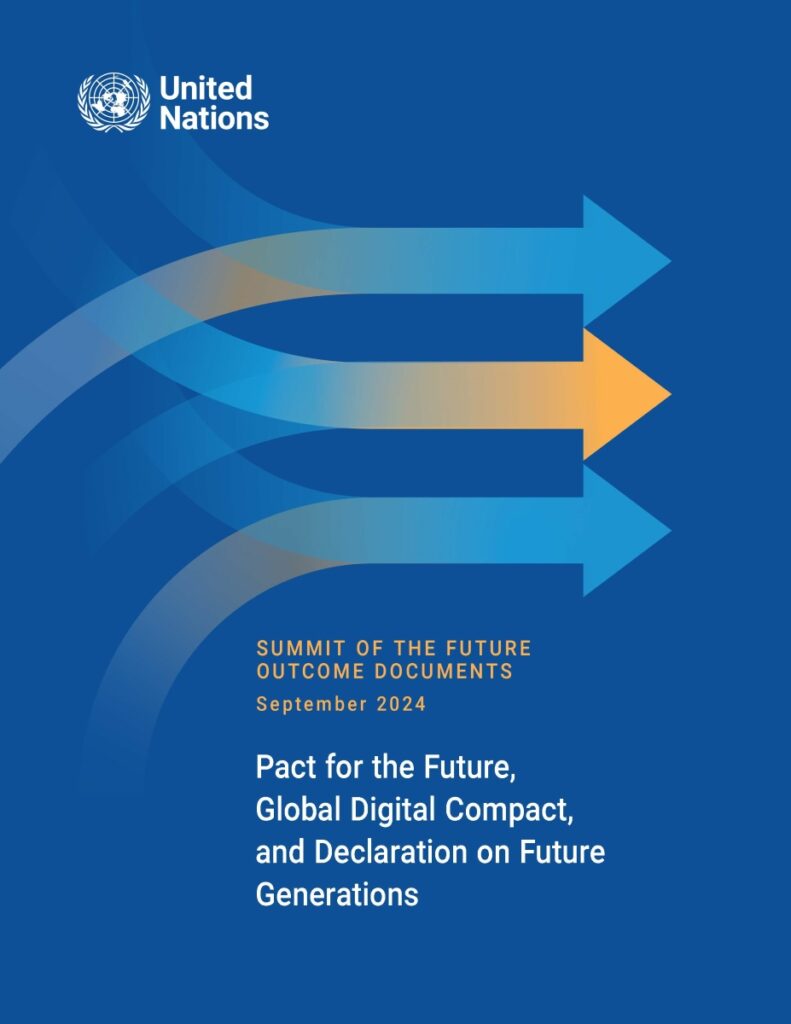
The Carlsson-Ramphal Report 1995 and the UN Pact for the Future 2024.
The invitation to the Summit of the Future referred to a once-in-a-generation opportunity to enhance cooperation on critical challenges. The Carlsson-Ramphal report came in 1995, one generation ago, and the Brandt report in 1980, almost two generations ago. The once-in-a-generation reference was not a platitude plucked from thin air but had a history. The background paper for the summit by UN General Secretary António Guterres was titled Our Common Agenda. The subtitle of the second Brandt report was Our Common Crisis. Two follow-up commissions by Olof Palme and Gru Harlem Brundtland delivered Common Security and Our Common Future reports, respectively. The title of the Carlsson-Ramphal report was Our Global Neighborhood. Guterres showed with the title Our Common Agenda that he was conscious of a historical heritage that provokes action at least once in a generation.
The summit began by adopting “A Pact for the Future”, agreed in advance by consensus through intergovernmental negotiations. The pact has chapters on sustainable development and financing for development, international peace and security, science, technology and innovation and digital cooperation, youth and future generations, and transforming global governance. It claims to be action-oriented. It is divided into 60 action items, each with the steps listed for implementation.
The topical range of the Pact for the Future is huge, and the perspective is planetary: the eradication of poverty and decreasing global social and economic inequalities, environment protection, struggle against climate change and resource exhaustion, commitment to sustainable development and world trade with a place for trade preferences for the poor. The pact outlines a global financial architecture with special drawing rights as an instrument against trade imbalances, reminding of the Brandt report.
The UN sustainable development goals (SDGs) adopted in 2015 to be implemented by 2030, which replaced the Sustainable Millenium Goals (SMGs) adopted at the millennium shift 2000 but failed to be achieved in 2015 as agreed, have given the UN a particular credibility problem. Few believe that the SDGs will succeed where the SMGs failed. Instead, they give the impression of the carrot that keeps the horse trotting. When adopting the Pact for the Future, the SDGs were considerably behind the time schedule. The authors of the text for the pact were aware of the credibility gap and did their best to dispel doubts by referring to intensified efforts, enduring commitment, collective efforts to turbocharge the implementation, and similar. For a quarter of a century, sustainable development goals have been unable to prevent poverty and hunger from increasing, and inequalities have widened. Human rights are under threat, and millions of people risk being left behind. Climate change, biodiversity loss, desertification, sand and dust storms, torrential rains of previously unknown proportions, floods, plastic waste from the deepest parts of the oceans to the highest tops of the mountains, and pollution in general of air, water, and other environment, pose immense risks to cohabitation on the planet. It is not difficult to find arguments for the SDGs. The problem is that most of the problems have not only been on the agenda since the Brandt and Carlsson-Ramphal commissions, but they have deteriorated and threaten to become existential at the level of the nuclear threat during the Cold War.
When reading the Pact for the Future, one wonders whether it is an action plan to implement, as it argues to be, or a normative catalogue. Is it about what will be done or what should be done? Is it a commitment or a wish list?
Probably, it is a bit of all, and only the future can tell where the emphasis will be. Wherever, who can blame a UN general secretary who tells the world how serious the situation is and how urgent, immediate and prompt action is? What other global organisation can initiate and coordinate such an agenda, our common agenda, as Guterres underlines? The problem is not the UN and its general secretary but the member states. The plan requires concerted action. However, while Brandt and Carlsson-Ramphal knocked at the door but were denied entrance, the UN has now recognised the problem list and made it its own.
On this ground, now, one can only hope that the UN becomes the global deliberation and decision center it should have been long ago, that the vision of the NIEO campaign for a New International Economic Order inspiring the Brandt Commission and the Carlsson-Ramphal Commission’s vision of a world society finally become political action. Hope ‒ and thank Guterres for his initiative and the Brandt and Carlsson-Ramphal commissions for their preparatory work. One might repeat the slogan of the mass demonstrations in England in the spring of 1980 to demand political implementation of the Brandt report: Action on Brandt. Action on the Pact for the Future!
How to quote:
Cit. Bo Stråth, “The United Nations and the Visions of the Future: Brandt, Carlsson-Ramphal and the Pact for the Future.” Blog. https://www.bostrath.com/planetary-perspectives/ordering-of-space-and-time/the-united-nations-and-the-visions-of-the-future/ Published 23.09.2024
Comments
Please submit you comments with the Contact Form or send an Email to bo.strath@gmail.com.
